Benefits of Visitor Use Management
Benefits of Visitor Use Management
Since the creation of some of the first parks and protected areas in the United States, including the Catskill Park (1885) and the Adirondack Park (1892), land managers, scientists, outdoor enthusiasts, and others have been asking a key question: How many people can these places accommodate while protecting both ecological integrity and the visitor experience? Enter the concept of visitor use management (VUM).
Over the past fifty years, there have been numerous VUM frameworks, including Limits of Acceptable Change, Visitor Impact Management, Visitor Experience and Resource Protection, and the most recent version, the Interagency Visitor Use Management Framework, which was unveiled in 2016. The common thread of these VUM frameworks has generally been managing lands enjoyed for recreation by focusing on specific and measurable objectives.
As the demand for high-quality outdoor experiences has risen exponentially over the years, the complexity of managing public lands has increased correspondingly. Modern-day land managers are operating in a rapidly changing world and a VUM framework can help them and their partners make sound decisions today that will safeguard our shared lands for generations to come.
Though engaging in authentic visitor use management is a process, not a quick fix, there are numerous benefits to using an established VUM framework for managing parks and protected areas which include:
(1) determining a stated desired future condition, i.e. deciding what we want a place to look like, be like, and feel like in the future;
(2) managing lands by design, not by default; and
(3) an iterative process whereby managers can respond in real-time to changes or emergent issues because VUM frameworks provide a robust feedback loop while taking into account changes over time.
Furthermore, VUM frameworks allow for the development of collaborative long-term management strategies that protect resources, connect people to the land, and manage visitor use in ways that provide sustainable recreation.
One of the primary benefits of the contemporary VUM framework is that it is highly flexible and adaptable to specific situations and needs by using a data-driven approach. Both existing baseline data and ongoing monitoring data help inform and drive management decisions to achieve and maintain a desired future condition. If the data demonstrate that specific visitor use patterns or impacts conflict with the desired future condition or specific management actions do not have the intended effect, changes can be made to stay on course.
In response to recent spikes in public land visitation due to the pandemic, some land managers implemented strategies such as permit or reservation systems to try and level demand, protect resources, and minimize the burden on park staff who were spread so thin they were essentially operating in triage mode. While some of these tactics were effective and arguably necessary, many were implemented without the benefit of a data-driven, collaborative VUM approach.
Had managers had the time to move through a more deliberate VUM framework, other strategies beyond permitting may have emerged that could have offered the same benefits. This is one of the very real advantages of a formal VUM process—taking into account the myriad aspects, perspectives, and data related to a place or a recreational situation, and arriving at the best solutions to achieve a desired future condition.
Though none of us know precisely what the future holds, we can observe trends over time, and it is clear that there is an insatiable demand for outdoor recreation. By using an established VUM framework, land managers and their partners can help ensure a sustainable recreation future for both people and the land.
This article was written by Ben Lawhon and published in the Winter 2024 issue of Adirondac magazine.
Ben Lawhon is a seasoned conservation professional with a deep commitment to environmental protection through public/private collaboration, research, and education. As the founder and principal of Recreation Solutions Group, he works with parks and protected areas to assess, understand, and solve visitor use issues and impacts.
Related
ADK Trip Planning Sessions
Need help planning your backcountry adventure? Schedule a personal, online session with an ADK staff […]
Mud Season: Quick Facts
Just what is mud season? Running anytime from late March into mid-June—it varies each year […]
Spring on the NPT
by Jeffrey Case In the Spring a fuller crimson comes upon the robin’s breast; In the […]
Impromptu Honeymoon on the NPT
by Addison Wolanin My wife, Shannon, and I got married in July 2020—and we all […]

